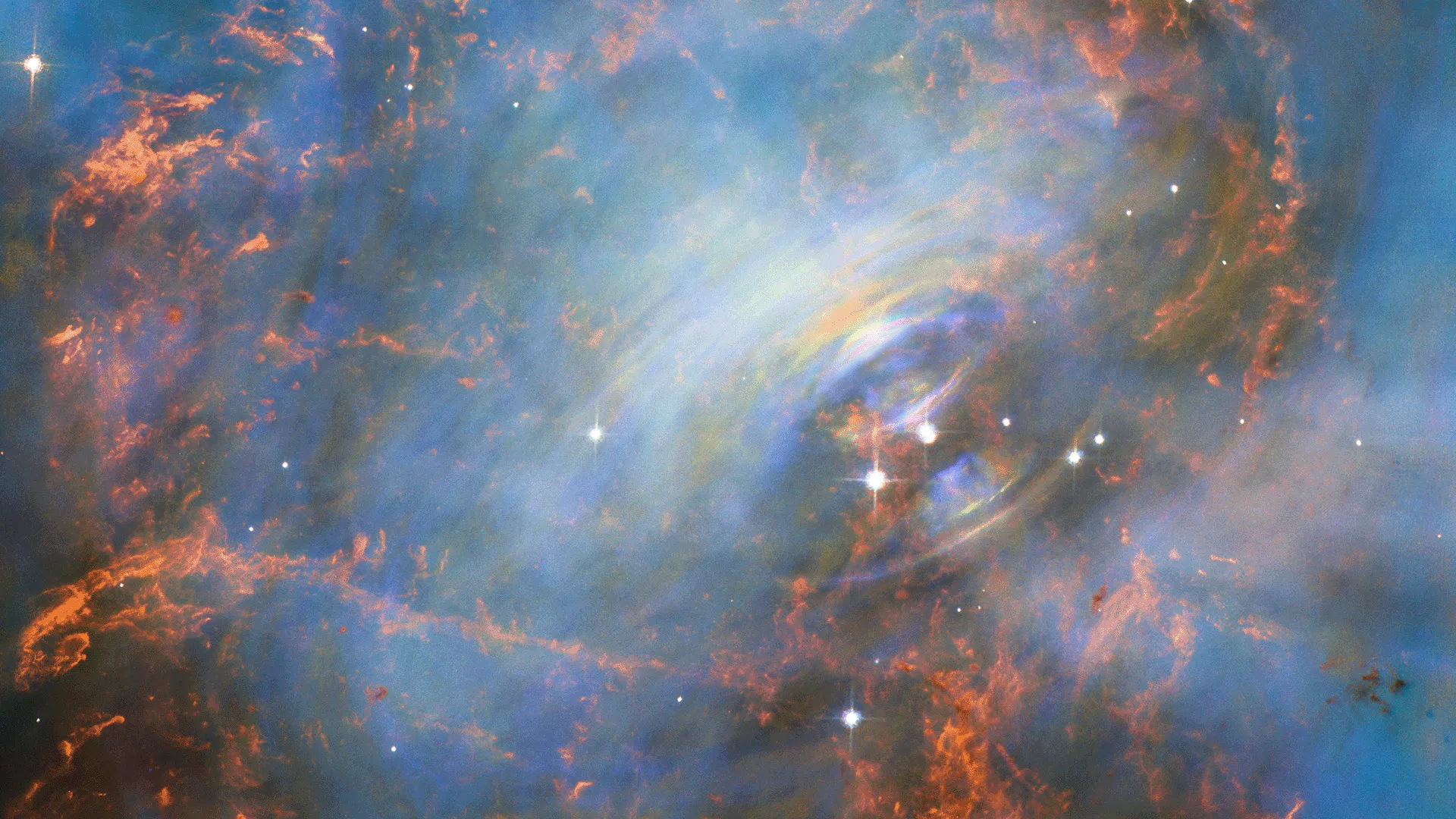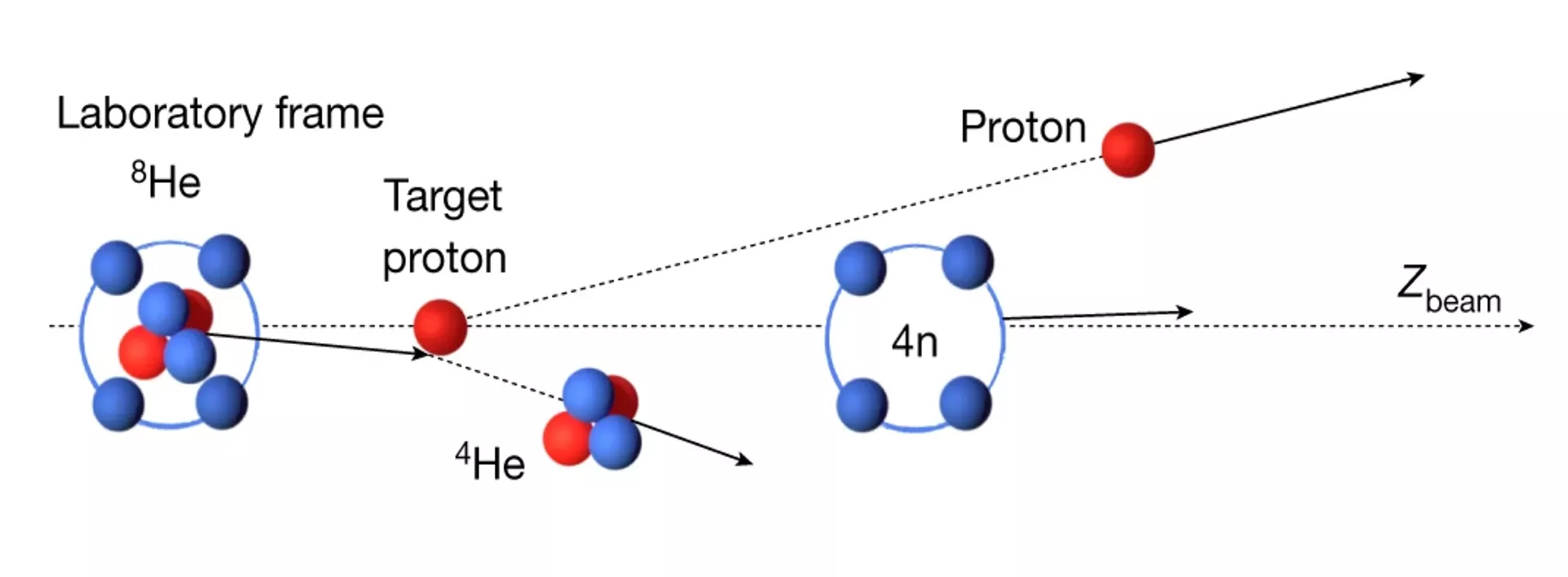Researchers of the ELKH Institute for Nuclear Research (ATOMKI) in Debrecen participated in experiments using what is known as missing-mass spectroscopy to demonstrate the existence of a positively charged proton-free “nucleus” comprising four neutrons. It therefore follows that it is not just the gravitational field but also the strong reciprocal force that arises between the protons and neutrons comprising the nucleus that is able to keep pure neutron material together. The results published in the journal Nature on June 22, 2022 help us better understand the strong reciprocal force that keeps the nuclear core together and the forces at work in neutron stars.
Once thought to be the smallest building blocks of the material world, it was discovered in the course of the 20th century that atoms can be split further: the nucleus made up of positively charged protons and neutral neutrons is surrounded by a cloud of negatively charge electrons. One of the longest-standing questions in nuclear physics relates to the formation of chargeless atomic systems, or rather whether nuclei can exist without positively charged protons.

The central neutron star (the right of the two stars shining towards the center of the image) at the heart of the Crab Nebula; image: ESA/Hubble & NASA
As far as we know today, pure neutron systems can only arise in neutron stars, where the mass of neutrons is held together by gravity and compressed into high-density material. According to some theoretical calculations, tetraneutrons, i.e. systems made up of just four neutrons, can exist, but this assertion has been rejected by multiple theoretical physicists. The purpose of the experiments was to resolve this conflict.
On the basis of the results of the series of experiments that took place with the participation of the ATOMKI researchers, it was found that a tetraneutron can exist, even if for a short time only. Due to the size of the task, the experiments were conducted at the RIKEN research institute in Japan by combining two major collaborations. The researchers from ATOMKI participated in the experiments by assembling and operating the measuring equipment, primarily the neutron detector, as members of both collaborations.
The researchers initially produced high-energy exotic radioactive nuclei with the help of connected particle accelerators. In the case of exotic nuclei, the ratio of mass and charge diverges considerably from the ratio typical of stable nuclei found in nature. In the experiment, this ratio was 4, while the largest naturally occurring mass/charge ratio ‒ in the nucleus of the lead atom ‒ is 2.5. In the course of the experiments, the unstable nucleus of the helium isotope with mass number 8 (8He) and comprising two protons and six neutrons was studied. This undergoes radioactive decay in a short time, with a half life of just 119 ms (1 millisecond = 10-3 s).
As the nucleus of the hydrogen atom comprises just a single proton, the researchers used liquid hydrogen (at a temperature of -255 °C) as their target, bombarding it with 8He nuclei with a force of 1.2 GeV (giga electronvolts). In some cases, the inbound 8He impact one of the target protons, as a result of which the proton is just nudged, while the 8He falls apart. As a result of this, 4He ‒ the most frequently occurring, stable helium nucleus ‒ and 4n, i.e. the tetraneutron, are formed.

The nuclear physics process observed in the experiments. The accelerated 8He nucleus strikes one of the protons making up the target object. Due to the collision, the 8He breaks in two whereby the tetraneutron comprising four neutrons separates from the highly stable 4He nucleus. Image: Nature, Volume 606, Pages 678–682 (2022), Fig.1
As the neutron detector that served to directly indicate the tetraneutron only showed very few four-neutron events, the researchers participating in the experiments decided to use an indirect method in the form of missing-mass spectroscopy. In the course of this process, it was not the tetraneutron in question that they detected, but the data known from the initial 8He nucleus, the knocked-out proton and the 4He resulting from the collision to deduce the characteristics of the tetraneutron.
The main question arising from the experiments was whether the resulting four neutrons were able to stay together, thereby forming a tetraneutron. By using the indirect method, the researchers were able to demonstrate that this was possible, albeit for just 10-22 seconds. On this basis, pure neutron material can be held together not only by gravitational force, but also a strong reciprocal force. The demonstration of the existence and precise lifetime of the tetraneutron holds the key to better understanding the powerful reciprocal force between the protons and neutrons that make up the nucleus, and provides further insight into the forces at play in neutron stars. In order to obtain even more precise answers still, the researchers are conducting further experiments and taking additional measurements.
Publication:
Duer, T. Aumann, R. Gernhäuser, V. Panin, S. Paschalis, D. M. Rossi, N. L. Achouri, D. Ahn, H. Baba, C. A. Bertulani, M. Böhmer, K. Boretzky, C. Caesar, N. Chiga, A. Corsi, D. Cortina-Gil, C. A. Douma, F. Dufter, Z. Elekes, J. Feng, B. Fernández-Domínguez, U. Forsberg, N. Fukuda, I. Gasparic, Z. Ge, J. M. Gheller, J. Gibelin, A. Gillibert, K. I. Hahn, Z. Halász, M. N. Harakeh, A. Hirayama, M. Holl, N. Inabe, T. Isobe, J. Kahlbow, N. Kalantar-Nayestanaki, D. Kim, S. Kim, T. Kobayashi, Y. Kondo, D. Körper, P. Koseoglou, Y. Kubota, I. Kuti, P. J. Li, C. Lehr, S. Lindberg, Y. Liu, F. M. Marqués, S. Masuoka, M. Matsumoto, J. Mayer, K. Miki, B. Monteagudo, T. Nakamura, T. Nilsson, A. Obertelli, N. A. Orr, H. Otsu, S. Y. Park, M. Parlog, P. M. Potlog, S. Reichert, A. Revel, A. T. Saito, M. Sasano, H. Scheit, F. Schindler, S. Shimoura, H. Simon, L. Stuhl, H. Suzuki, D. Symochko, H. Takeda, J. Tanaka, Y. Togano, T. Tomai, H. T. Törnqvist, J. Tscheuschner, T. Uesaka, V. Wagner, H. Yamada, B. Yang, L. Yang, Z. H. Yang, M. Yasuda, K. Yoneda, L. Zanetti, J. Zenihiro & M. V. Zhukov. Observation of a correlated free four-neutron system. Nature, Volume 606, Pages 678–682 (2022)